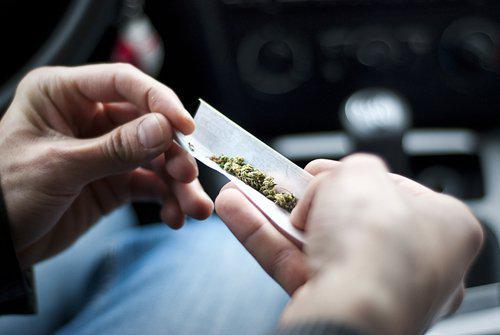Recent Blog Posts
Have You Been Charged with Forgery in Wisconsin?
 Forgery is the act of creating, altering, using, or possessing a false document with the intent to defraud someone, and it is considered a white collar crime in Wisconsin. There are many different ways forgery may occur, and the types of documents that might be the subject of a forgery charge vary widely. For example, forgeries can be made on documents such as birth certificates, transcripts, wills, or a bill of sale, or on objects, like membership cards, credit cards, or tickets to travel, that symbolizes some value or serves as a means of identification.
Forgery is the act of creating, altering, using, or possessing a false document with the intent to defraud someone, and it is considered a white collar crime in Wisconsin. There are many different ways forgery may occur, and the types of documents that might be the subject of a forgery charge vary widely. For example, forgeries can be made on documents such as birth certificates, transcripts, wills, or a bill of sale, or on objects, like membership cards, credit cards, or tickets to travel, that symbolizes some value or serves as a means of identification.
Regardless of the type of document or object at issue in a specific forgery case, in order to secure a conviction, the prosecutor must prove specific factors behind the forgery beyond a reasonable doubt. There are many defenses available that a skilled attorney can advance on your behalf.
Are You Being Investigated for or Charged with Embezzlement in Wisconsin?
 Embezzlement is considered a white collar crime in the state of Wisconsin. For a non-violent crime, there are rather steep penalties involved, so if you are charged with embezzlement in Wisconsin, you need immediate legal representation.
Embezzlement is considered a white collar crime in the state of Wisconsin. For a non-violent crime, there are rather steep penalties involved, so if you are charged with embezzlement in Wisconsin, you need immediate legal representation.
What Is Embezzlement?
Embezzlement charges are commonly brought in Wisconsin against a former employee accused of stealing from an employer, although embezzlement charges are brought in a host of other situations as well. Embezzlement is a crime that is committed when somebody who was trusted to maintain or manage another person’s property or money steals all or part of what they were entrusted with for personal gain. Embezzlement is a unique crime, as it is a combination of traditional stealing with the requirement that the person alleged to be the embezzler must have been in a position of trust by the victim.
First Criminal Conviction for Spoofing May Increase Scrutiny for Other U.S. Businesses
 In today’s technologically savvy world, fraud is more rampant than ever. Foreign “companies” promise products or services that they cannot deliver on. Unsuspecting Americans are pulled into counterfeit fraud. And companies are able to manipulate the markets in order to fool investors and increase their stock. This last offense — otherwise known as spoofing— has only recently seen its very first criminal conviction. As such, many U.S. businesses may be facing increased scrutiny in how they conduct business, making them more susceptible to accusations of fraudulent activity.
In today’s technologically savvy world, fraud is more rampant than ever. Foreign “companies” promise products or services that they cannot deliver on. Unsuspecting Americans are pulled into counterfeit fraud. And companies are able to manipulate the markets in order to fool investors and increase their stock. This last offense — otherwise known as spoofing— has only recently seen its very first criminal conviction. As such, many U.S. businesses may be facing increased scrutiny in how they conduct business, making them more susceptible to accusations of fraudulent activity.
Spoofing and the Market
Manipulation of the stock market is not a new concept; companies, both small and large, have been trying to do it for years. For the most part, such actions were largely unsuccessful, but relatively new high-frequency trading tools have made spoofing much easier to do, and with less risk of detection. In fact, the government has had a hard time keeping up with the activity until recently, unsure of how to convict and prove such actions. However, the recent verdict indicates they may have found a way to start analyzing and criminally convicting businesses, in mass.
White Collar Crimes: Aggressive Prosecution of Executives Creating a Concerning Justice Trend
 If you thought working your way up the corporate ladder to a top executive position was difficult enough, you also need to be aware of the need to avoid criminal prosecution. “Stung by years of criticism that it has coddled Wall Street criminals”, the Justice Department issued new policies in the Fall of 2015 that prioritize the prosecution of individual employees — not just their companies — and “puts pressure on corporations to turn over evidence against their executives.” Currently, there are an estimated 4,500 federal criminal statutes and 300,000 administrative regulations that could lead to criminal charges for company executives and professionals, and the list of white collar and regulatory crimes keeps growing. Equally concerning is how, under some of these statutes, an executive may be charged with a crime she or he did not personally commit and was not even aware of.
If you thought working your way up the corporate ladder to a top executive position was difficult enough, you also need to be aware of the need to avoid criminal prosecution. “Stung by years of criticism that it has coddled Wall Street criminals”, the Justice Department issued new policies in the Fall of 2015 that prioritize the prosecution of individual employees — not just their companies — and “puts pressure on corporations to turn over evidence against their executives.” Currently, there are an estimated 4,500 federal criminal statutes and 300,000 administrative regulations that could lead to criminal charges for company executives and professionals, and the list of white collar and regulatory crimes keeps growing. Equally concerning is how, under some of these statutes, an executive may be charged with a crime she or he did not personally commit and was not even aware of.
Embezzlement in Wisconsin: Examples of Cases and Related Statute Information
 Although Wisconsin does not call it “embezzlement,” the act of pilfering money or property by an employee is delineated under Wisconsin statute 943.20 is a felony. This “theft” statute defines the illegal action of any person who has taken funds or property, greater than $10,000 in value, without the owner’s consent and resulting in personal or business gain for the offender. Although prosecution and restitution may be handled as a civil matter between the business or entity that has experienced loss and the alleged person responsible for the loss, embezzlement cases are often charged criminally.
Although Wisconsin does not call it “embezzlement,” the act of pilfering money or property by an employee is delineated under Wisconsin statute 943.20 is a felony. This “theft” statute defines the illegal action of any person who has taken funds or property, greater than $10,000 in value, without the owner’s consent and resulting in personal or business gain for the offender. Although prosecution and restitution may be handled as a civil matter between the business or entity that has experienced loss and the alleged person responsible for the loss, embezzlement cases are often charged criminally.
- If the value of the property is less than $2,500, the defendant is looking at a misdemeanor punishable by up to nine months in jail and a fine of $10,000;
Then and Now: The Evolution of the RICO Law
 The mention of the Rico Law or more formally, the 18 U.S. Code Chapter 96, Racketeer Influenced and Corrupt Organizations (RICO) often brings to mind the five Mafia families convicted in New York City on November 19, 1986. Although the Rico Law has been on the books since 1970 when Congress passed the Act in an effort to combat organized crime, many criminal defense attorneys first shied away from using the act as a prosecution tool because they did not fully understand the power of the Act.
The mention of the Rico Law or more formally, the 18 U.S. Code Chapter 96, Racketeer Influenced and Corrupt Organizations (RICO) often brings to mind the five Mafia families convicted in New York City on November 19, 1986. Although the Rico Law has been on the books since 1970 when Congress passed the Act in an effort to combat organized crime, many criminal defense attorneys first shied away from using the act as a prosecution tool because they did not fully understand the power of the Act.
Often referred to as the atomic bomb that brought the Five Mafia Families to their knees, the RICO Act was evoked to establish the intertwined families as an operating commission linked to criminal activity for monetary gain.
Although today’s crime syndicates appear less territorial and open to stronger collaborative bonds, prosecution under the RICO Act remains in play today.
Fraud, Forgery, and Bad Checks in the State of Wisconsin
 Fraud, forgery, and criminal charges resulting from writing a bad check can seem rather similar. However, there are some significant differences between these types of offenses; the most notable of which rests in the defendant’s intentions. If you are facing criminal charges for fraud, forgery, or charges related to writing a bad check, know your rights and how you may best take action to avoid maximum penalties.
Fraud, forgery, and criminal charges resulting from writing a bad check can seem rather similar. However, there are some significant differences between these types of offenses; the most notable of which rests in the defendant’s intentions. If you are facing criminal charges for fraud, forgery, or charges related to writing a bad check, know your rights and how you may best take action to avoid maximum penalties.
Forgery
Forgery is defrauding another through the alteration or writing of an object so that it appears it was written or made by another individual. For example, a woman recently had a warrant issued for her arrest after allegedly altering a check written to her by a resident at the centerat which she works. Originally written for $11, she reportedly changed it to read $11,000 and then deposited the check into her bank. Possession or use of an altered document may also constitute forgery charges, even if the person in possession of the document was not the one who altered it.
Do Wisconsin Parents Pay the Price for their Kids Drug Crimes?
 By Attorney Steven McGaver
By Attorney Steven McGaver
A recent case in Whitewater, Wisconsin should provide cause for parents to more carefully monitor the actions of their children when using their automobile. The case which involves a 20-year-old freshman student from UW-Whitewater directly impacts her father, who owns the car in which she used to sell drugs.
The student used her father's car at school and as a means to come home on the weekends and for transportation around the campus and surrounding area. Additionally, and unknown to her father, she also used it to sell drugs to a confidential informant on three separate occasions this past spring. Instead of being charged with a drug crime, law enforcement officials chose to seize the vehicle under the State of Wisconsin's forfeiture law.
Wisconsin Marijuana Laws Not as Liberal as Elsewhere in the Nation
 While Colorado and Washington state have legalized recreational marijuana, and a host of other states have decriminalized possession or are slated to in the near future, Wisconsin has not yet moved in that direction. Currently, the possession, sale and cultivation of marijuana in Wisconsin are all illegal. An arrest for any marijuana-related crime carries the potential for significant penalties and jail time in Wisconsin, and it is imperative to have an experienced and local criminal defense attorney on your side.
While Colorado and Washington state have legalized recreational marijuana, and a host of other states have decriminalized possession or are slated to in the near future, Wisconsin has not yet moved in that direction. Currently, the possession, sale and cultivation of marijuana in Wisconsin are all illegal. An arrest for any marijuana-related crime carries the potential for significant penalties and jail time in Wisconsin, and it is imperative to have an experienced and local criminal defense attorney on your side.
Marijuana Possession
Any amount of marijuana possession in Wisconsin is a crime, and the penalties vary depending on several factors. The first factor is whether it is your first or subsequent offense. In addition to the statutorily prescribed penalties for marijuana possession, 100 hours of community service will be added to any conviction of marijuana possession if the possession occurred within 1,000 feet of a school, youth center, public park, pool, housing project, jail, or drug treatment facility.
Bicycle Safety in Wisconsin
 Under Wisconsin law, bicycles are considered vehicles on the roadways, meaning cyclists have an obligation to obey the rules of the road in the same way all vehicles do. They must also be treated as equal users of the road by other vehicles. Just because they are treated like vehicles, however, does not mean that cyclists are as safe as those riding in vehicles. In fact, bicycles are particularly vulnerable among road vehicles, evidenced by the fact that in 2013, In Wisconsin, one bicyclist was injured or killed every ten hours. There are several measures cyclists can take, however, to reduce the risk of crash, injury, or death.
Under Wisconsin law, bicycles are considered vehicles on the roadways, meaning cyclists have an obligation to obey the rules of the road in the same way all vehicles do. They must also be treated as equal users of the road by other vehicles. Just because they are treated like vehicles, however, does not mean that cyclists are as safe as those riding in vehicles. In fact, bicycles are particularly vulnerable among road vehicles, evidenced by the fact that in 2013, In Wisconsin, one bicyclist was injured or killed every ten hours. There are several measures cyclists can take, however, to reduce the risk of crash, injury, or death.
Bicycle Accidents in Wisconsin by the Numbers
In 2013, there were 958 crashes involved bicyclists in Wisconsin, including 868 injuries and ten deaths. In almost every case where there is a crash between a bicycle and a motor vehicle, the cyclist is injured. Bicycles are not protected in the way other motor vehicles are, but there are several measures cyclists can take to reduce the risk of crash, injury, and death. Most bicycle crashes occur between the hours of 3:00 pm and 7:00 pm, after school and commuting home from work hours. It is very important to be extra-vigilant if cycling during those hours.







